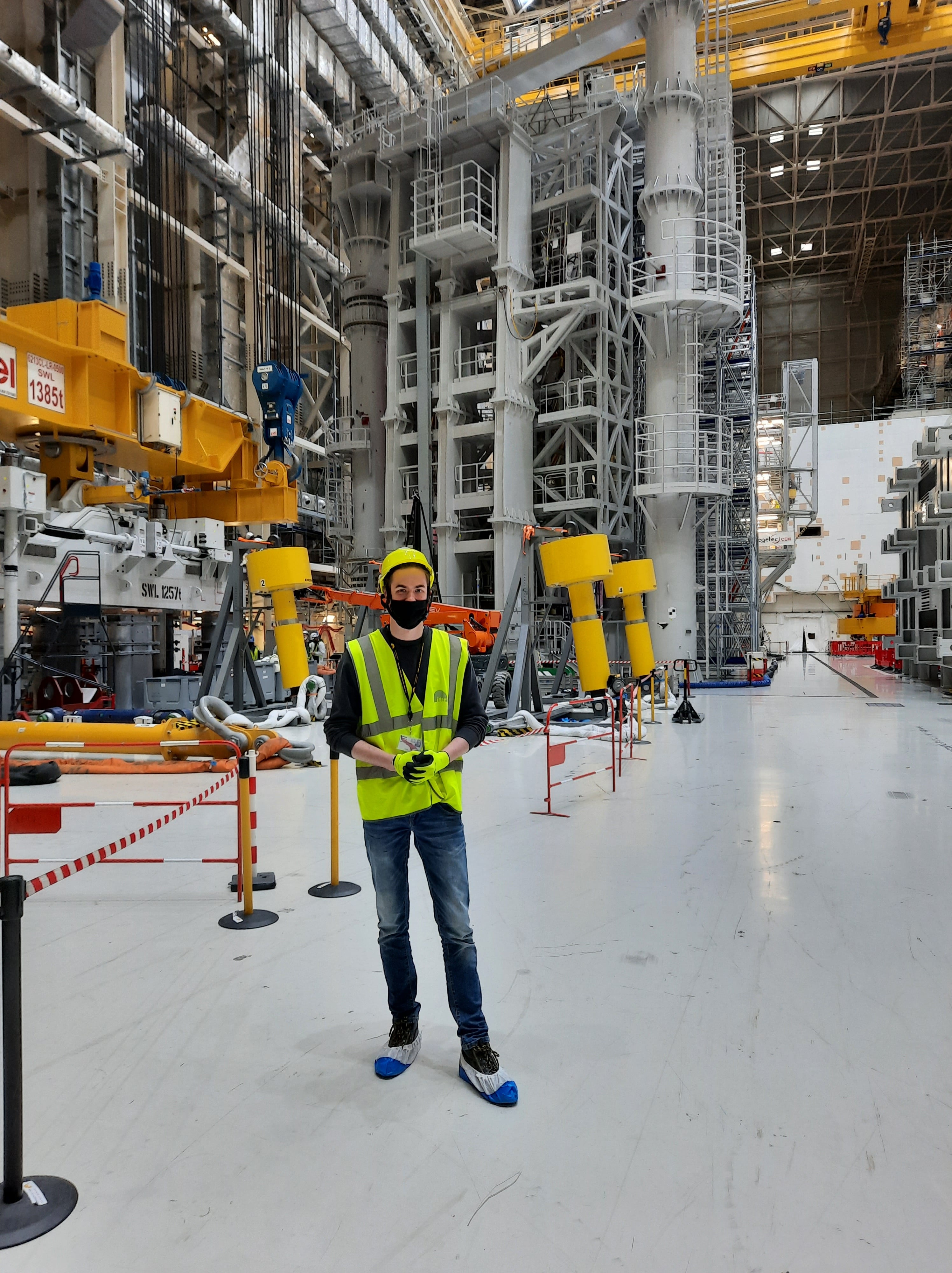The project
From February to May 2022, I spent my days working at ITER Organization for my Master’s internship project. Here I was supervised by Javier Artola, an incredibly knowledgeable and helpful person who made me feel right at home. The goal of my project was to simulate mitigated major disruptions in 2D using the non‐linear MHD code JOREK. Major disruptions are events that consist of rapid loss of plasma equilibrium and confinement. This results in rapid loss of the thermal energy and plasma current, effects that could lead to damage to components surrounding the plasma. For ITER, a disruption mitigation system is in the design phase, based on the shattered pellet injection (SPI) technique, which mitigates these damaging effects by injecting impurities. Simulating this using JOREK can teach us about the dynamics of such a mitigated major disruption, for example time‐ scales, wall forces etc. Specifically, my task was to compare the current quench time (the time over which the plasma current is lost) obtained from JOREK to results of other codes DINA, DREAM and TSC. This is an important parameter for design of the disruption mitigation system for ITER.
This turned out to be no easy task. As I was using a very newly developed JOREK model, the first stage of the project consisted mostly of fixing bugs and numerical issues. While this was not the most glamorous part of the project, it was well worth it when the simulations finally started working. Now, I could start focusing on implementing some artificial methods required to simulate the disruptions in 2D. When this all seemed to go well, I could start the sets of simulations to collect data on the current quench time. Admittedly, it was hard to let go of the project as I was very passionate about it, and I still had many ideas to improve my simulations. Nevertheless, I’m very grateful for everything I learned, and I’m happy I could contribute to ITER with a very enjoyable project.
Life around ITER
Apart from the great project I was able to work on, I really enjoyed my stay in the south of France, where I resided in Aix‐en‐Provence. In the office, I obtained a desk in an area where a lot of other interns were working as well. They were incredibly welcoming from day one, and it was a great group to spend time with outside of ITER. I also met a lot of PhD students who were always in for some fun activities in the weekends. Everyone lived in Aix as well, and as the center is rather small, people are always at most a 15‐minute walk away. It is a very lively city that never felt boring.
In the weekends, we spent most of the time visiting different cities in the area or hiking through nature. The region is full of beautiful places to go. As I’m passionate musician, I even found a place to jam together with some people. This made things feel like a long touristic vacation, while simultaneously making me feel very at home in the area. I’m very thankful for the experience and great people I met, and I would recommend anyone to follow in my footsteps!


